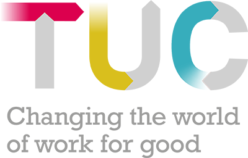For the RMT national ballot this year, we wanted to organize a turnout campaign that was based on measurable success. And one that helped us get across the doubly punitive hurdles for transport unions from the Trade Union Act.
We had 42,000 members to canvas, across 15 different employers. Adding in numerous distinct grades and disciplines per employer, and we obviously had a challenge in developing our messaging.
We’ve got quite an old school membership database, so we were looking to tactics that would fit around what our core tech was able to handle.
The first thing we tried for member engagement was organising phone banks. These were a lot of effort to organise and a lot of work to sustain. We needed to work through our regional offices to secure venues and phones, to prepare scripts and recruit activists. Because we wanted to measure the response, we needed to develop a system for recording evidence from conversations and train activists to use it.
So by the end of the month when the ballots were dropping, we’d been running phone banks on a daily basis in Liverpool, Birmingham, and London. Those three phone banks managed to speak to 8% of the target members – with a contact rate of 49%.
From a friend at the TUC, I heard about work they’d done with UCU around peer to peer SMS in a national ballot campaign, so we requested help in setting something similar up at the RMT.
Peer-to-peer SMS (also called distributed SMS) is a way to devolve text message conversations to volunteers and run them at scale. The specific software we used (GetThru) is a browser-based app. So you don’t need to download anything. And whilst it works best on a computer, it can also be run on a tablet or mobile phone. A central administrator assigns logins to activists. So you can have as few people or as many people using it as you need.
The tool handles mail merges into texts with data you’ve pre-uploaded like membership numbers, names, employers or postcodes. It allows an individual to send out hundreds of texts that are all personalised, without needing to type them out.
And it looks to the members that are receiving them, like it’s coming from a regular phone number, rather than a marketing short code. It invites them to respond, which goes to the same activist that sent them. So there’s the potential for a real conversation. And it lets the activist log conversation results, so you can measure outputs and engagement.
There were questions about GDPR compliance that it is worth mentioning. We sought a legal opinion that suggested we shouldn’t be asking people if they had voted, but it was completely fine for us to ask people if they had received the ballots. So we focused our comms around that point. Others have had different suggestions on this, so we’d suggest getting your own analysis of what you’re planning to do with it.
But identifying if people had received their papers was a critical part of the project for us. A significant proportion of our members had incorrect postal addresses listed in our system, so we needed to be able for them to confirm their address and request new ballots in an organised way if they were going to get them.
We needed to recruit volunteer activists to run these texts. We held a pre-ballot rally, which had several thousand people watching online. We put a QR code on the screen for people to scan, with the speakers talking it up as an action we needed people to take. The QR code took them to a Google Form to register their interest in volunteering. All of this was easy to set up, using free cloud software.
We got about 450 people sign up that way, and approached them to get them booked up for training. The first training was on a Friday and we trained 42 people in that session. As it turned out, that was enough people to contact our entire electorate over the weekend!
The first text we sent was mail-merged to include the member’s details and the sender’s, so for example:
Hey Donna, just checking to see if you’ve received your green ballot paper for the Network Rail industrial action ballot in the post yet? Thanks, Kierin from the RMT
Where people replied that they didn’t have a ballot paper, we were able to confirm their address (by mail-merging a templated reply text, showing the postcode we held on file and asking if it was right). If it was wrong, we sent them to a Google form to give us a new address, and this was passed on to the team that ordered the new ballots.
Most of the conversations were really simple, and the engagement rate was high. The contact rate was 48% – only one percent below the phone banking. Overall we had 28% of our replaced ballot papers issued from P2P, compared to 11% from the phone banks.
There was a financial cost to P2P texting, which works on a pay as you go basis per message – in the first ballot we sent about 76,000. But that, that measured very favourably I think against the costs of running a phone bank.
Phone banks are a great way to get activists working together in a room. But getting people together for P2P SMS can also be a good organising activity. It’s great to engage members who have sat together in the back of a van at work, tethering a laptop off their phone before work, and sending out a few hundred text messages before they go.
But overall the hard facts are that 42 activists on P2P covered six times the ground in one seventh of the, the time as the three phone banks.
So to be clear again, the P2P tactic was not the entire campaign, just one element of it. Most of the 42,000 members that were balloted tended to be in well established workplaces, where our predecessors have been organising for over a century, and can call on the strong networks the union has built over time.
Perhaps as many as 3000 reps and activists were engaged in the whole campaign. That’s very high proportionally against our membership. 61% of replacement voting papers requests came via traditional routes – people calling our helpline, emailing the office, or reps getting word to regional officers.
And the union had a full programme of email and broadcast text updates going out about the ballot, as well as paid and organic social media.
Texting gave us a source of intelligence on activity, but it was far from a crystal ball. Using ThruText to predict how the ballots would go suggested we would lose six ballots, when in fact we only lost one of them (and by just five votes). So whilst this helped us target some areas over others, you could arguably say it wasted resources on some areas that were really performing better than they looked.
You might find a stronger relationship between turnout and peer-to-peer texting returns where member data has a higher proportion of recently updated mobile numbers – for example where there’s been another ballot more recently.
Our data analysis at the time of the first ballot was not sophisticated enough to map against variables like regional bias, age, grade, etc, in real time. But it can be done in future. And in the second campaign, we at least did target specific locations in the reballot. We’ve also got useful data that we can look at to see whether members in different demographic groups are more or less likely to vote and adjust our tactics accordingly.
In the stats from our reballot, the data from ThruText was still under-reporting the final results – by around 14% but – with a couple of outliers – the trend line across companies balloted more closely tracked the trend of the actual results.
So to conclude, P2P SMS was worth doing and worth repeating. It’s relatively cheap. It’s easy to use, can be built into head office functions and can be used to galvanise activists. The key thing for us is that it provides measurable data and it should provide better statistical lessons the more it is used provided the data is analysed.
Bill Paterson is Senior Membership Officer at the RMT. This blog is taken from a presentation Bill made to a TUC Digital Lab webinar

